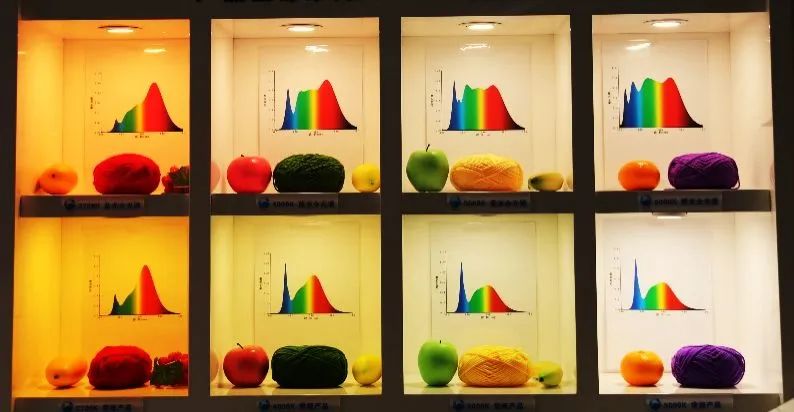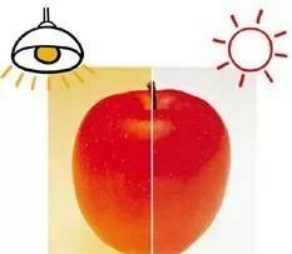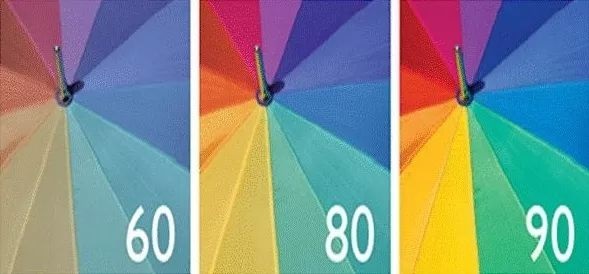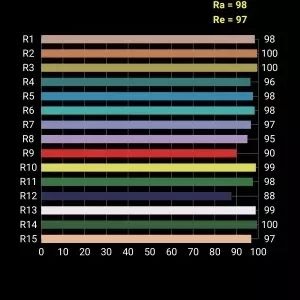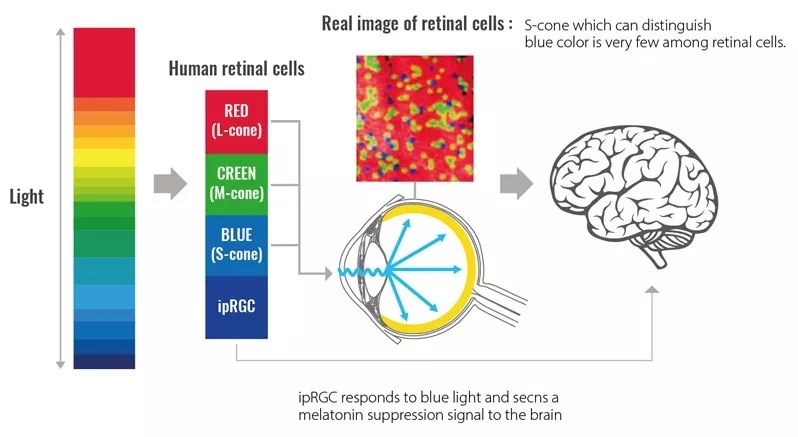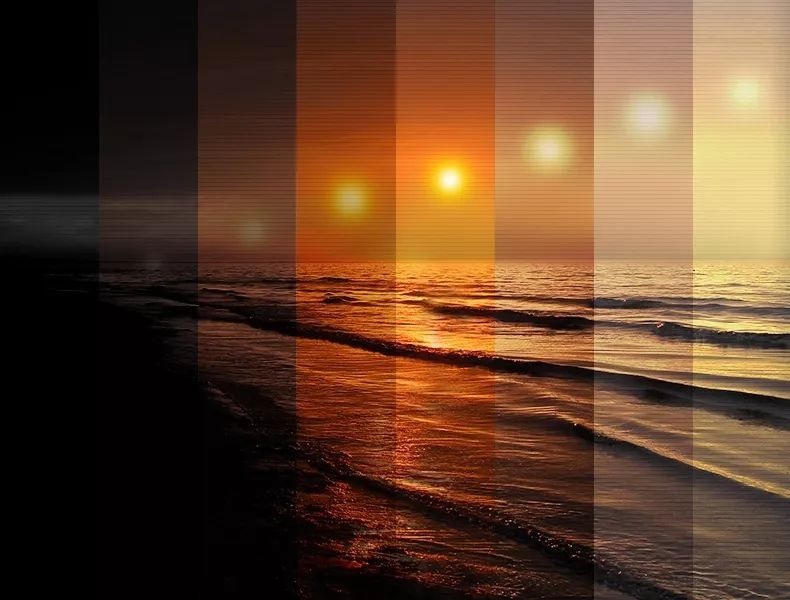LED endüstrisi, on yılı aşkın bir gelişme ve vaftizden sonra, ışık verimliliği teknoloji seviyesinin sürekli iyileştirilmesiyle, aydınlatma trendlerinin peşinde olan LED üreticileri, geçmişte yüksek ışık verimliliğine sahip olmuş, uzun ömür yavaş yavaş daha verimli, daha sağlıklı bir hale dönüşmüştür. aydınlatma ürünleri. Bu aşamada sağlık aydınlatması, LED endüstri zincirinin üst ve alt kısımlarına odaklanan mavi bir okyanus alanına dönüştü. Peki tam spektrumlu aydınlatmanın uygulama değeri nasıldır? Özellikle hangi alanlarda kullanılıyor?
Son yıllarda, LED atılımlarının gelişimi, temel teknoloji bariyerini kırarak, insanlar kırmızı, yeşil ve mavi renkli ışık elde etmek için mor LED uyarma fosforunun kullanımına kadar geleneksel LED teknolojisinin mavi LED uyarma fosforu olacak, renkten sonra Güneş'in benzer ışık spektrumunu üretmek için üst üste gelen ışık karışımı. Bu teknoloji LED'in kendi teknik özellikleri ve ürün avantajlarıyla birleşerek tam spektrumlu LED'i aydınlatma pazarının ihtiyaçları ve trendleriyle daha uyumlu hale getiriyor, dolayısıyla tam spektrumlu LED de oldukça tercih ediliyor.
Sağlıklı aydınlatma, ışığın görsel olmayan etkilerini ve bunun insanların fizyolojik sağlığı üzerindeki etkisini içerir ve daha yüksek ışık kalitesine sahip tam spektrumlu çözümler, insanların daha iyi görsel deneyimlerini tatmin etmeye daha fazla odaklanır.
Tam spektrumlu LED'lerin uygulama değeri
Bir aydınlatma sahnesini sağlıklı aydınlatma, aydınlatma lambaları ve fenerlerin yanı sıra renksel geriverim indeksi, renk sıcaklığı, aydınlatma, parlaklık ve stroboskopik göstergelere karşılık gelen gereksinimler doğrultusunda, spektrumun belirlenmesinde son derece önemli bir temel, onun spektrumu ve spektrumu olmalıdır. Güneşin spektrumuyla çakışma derecesi.
Çünkü ürünün spektrumu güneş ışığı spektrumundan önemli ölçüde sapsa bile, renksel geriverim indeksi, renk sıcaklığı, aydınlatma, parlaklık ve stroboskopik ve diğer teknik göstergeler de ilgili gereksinimleri karşılayabilir, ancak ürünün güneş ışığı spektrumundan önemli ölçüde sapma olması gerçekten doğru değildir. Sağlıklı aydınlatmanın anlamı.
Aydınlatma için LED paketleme teknolojisinin gelişmesiyle birlikte, güneş ışığı spektrumuna benzer tam spektrumlu (Tam Spektrum) LED teknolojisi teşvik edilmiş ve aydınlatma projelerinde uygulanmıştır.
a. İnsan sağlığı üzerindeki etkiler
İnsan yapımı ışık kaynakları ortaya çıkmadan önce tek ışık kaynağı güneş ışığıydı ve atalarımız yaşamları için güneşe bağlıydı. Güneş ışığı yalnızca yeryüzüne ışık ve enerji sağlamakla kalmıyor, aynı zamanda insanın fizyolojik ritimlerini de düzenleyerek insan biyolojisine, psikolojisine ve insan vücuduna etki ediyor.
Ancak modern şehir sakinleri, özellikle de ofis çalışanları, kapalı mekanlarda uzun saatler geçirmekte, güneş ışığıyla nadiren temas etmekte ve güneşten sağlık açısından fayda sağlayamamaktadır. Tam spektrumun önemi güneş ışığını yeniden üretmek ve doğanın ışığının insan fizyolojisi, psikolojisi ve insan vücudu üzerindeki faydalarını bize geri getirmektir.
b. Daha doğal renkleri geri yükleyin
Hepimiz bir nesnenin ışığa maruz kaldığında rengini göstereceğini biliyoruz, ancak bir nesne süreksiz ve eksik spektrumlu bir ışık kaynağına maruz bırakıldığında rengi değişen derecelerde bozulacaktır. Uluslararası Aydınlatma Komisyonu CIE, nesnenin gerçek rengine ilişkin ışık kaynağına ilişkin, renksel geriverimin ışık kaynağı tanımının sunum derecesinin tanımını yapmıştır. Işık kaynağının renksel geriverimini daha kolay tanımlamak için, aynı zamanda standart ışık kaynağına dayalı olarak renksel geriverim indeksi kavramını da tanıtmak için, renksel geriverim indeksi Ra 100 olarak ayarlanmıştır.
Mevcut LED ürünlerinin çoğu, Ra>80 renksel geriverim indeksini gerçekleştirebilmiştir, ancak stüdyo, stüdyo vb. ortamdaki bazı uygulamalar için, taze meyve ve sebzelerin yanı sıra ten renginin de gerçek şekilde yeniden üretilmesi gerekir. et renginin tekrarlanabilirliği yüksek senaryolarda, genel renksel geriverim indeksi Ra, ışık kaynağının gerçek rengi geri yükleme yeteneğinin değerlendirilmesini karşılayamamıştır.
Bu nedenle, bir ışık kaynağının rengi iyi veya kötü olarak geri getirme yeteneğini değerlendirmek için yalnızca genel renksel geriverim indeksine dayanılamaz, özel sahneler için özel renksel geriverim indeksinin ışık kaynağını da dikkate almamız gerekebilir. R9, renk doygunluğu Rg ve renk doğruluğu Rf değeri. Tam spektrumlu lambaların ışığı, insan gözünün görünür bölgesindeki her dalga boyu bandının renkli ışığına sahiptir; bu, zengin bir renk hissi sağlayabilir ve aydınlatılan nesnelerin en doğal ve gerçek renklerini geri getirebilir.
Ayrıca renk eksikliği ve tek renk tonunun olduğu bir çalışma ortamında uzun süre çalışmak, kişilerde görsel yorgunluk ve psikolojik baskıya yatkınlık yaratmaktadır. Tam spektrumlu ışığın zengin spektrumu, nesnenin gerçek rengini yeniden üretebilir, canlı ışık sağlayabilir, insan gözünün görsel yorgunluğunu azaltabilir, göz rahatsızlığını azaltabilir ve böylece kullanıcının ışık ortamının konforunu artırabilir.
C. Gözlerinize bakım yapmak
Geleneksel LED'lerin çoğu sarı fosforu harekete geçirmek için mavi ışık kullandığından ve beyaz ışık elde etmek için renkli ışığı karıştırdığından. Mavi ışık bileşeni çok yüksekse, uzun süreli kullanım durumunda mavi ışık insan gözü merceğinden retinaya kadar nüfuz edebilir, maküler hücrelerin oksidasyonunu hızlandırabilir ve optik hasara neden olabilir.
İnsan gözü için, uzun bir evrim sürecinden sonra insan gözü güneş ışığına uyum sağlamıştır, ışık doğal ışığa ne kadar yakın olursa insan gözü o kadar rahat olur. Tam spektrumlu LED, ışık kaynağının kökünden gelen mavi ışık bileşenini azaltan ve gözlere verilen zararı azaltan mor LED uyarımını benimser. Aynı zamanda, tam spektrumun spektral eğrisi güneş ışığının spektral eğrisine yakındır ve bu da kullanıcının göz rahatlığını etkili bir şekilde artırabilir. Buna ek olarak, tam spektrum, gerçek göz koruması elde etmek için retinal mikro sirkülasyondaki kısa vadeli engelleri de azaltabilir, ayrıca göz kuruluğu ve yorgunluğun neden olduğu kan akışı engellerini yavaşlatabilir!
D. Düzenli çalışma ve dinlenmenin düzenlenmesi
İnsanın biyolojik saati kanununa göre insan beyni genellikle akşam 21.00 veya 22.00'de melatonin salgılamaya başlar. İnsan beyninin epifiz bezi tarafından daha fazla melatonin salgılandıkça vücudumuz yavaş yavaş dinlenmeye ve uyumaya ihtiyacı olduğunu fark eder. Melatonin, yatmadan önce uyanma süresini ve uykuya dalma süresini kısaltmaya yardımcı olan ve uyku kalitesini artırabilen bir maddedir. Ve bu maddenin insanların maruz kaldığı ışıkla yakın ilişkisi vardır, özellikle mavi ışığa duyarlı olan mavi ışık, yüksek mavi ışıkta uzun vadede insan beyninin epifiz bezinin ürettiği melatonin üzerinde engelleyici etki yapacaktır. ışıklı ortamlara ve hatta uyku bozukluklarına neden olur.
Ve tam spektrumun ortaya çıkması, daha kaliteli ışık sağlayabilir ve insanların yaşamındaki ışık ortamını iyileştirebilir. Mavi ışığın daha az bileşeni, insanların gece çalışma ışığı ortamını daha makul hale getirebilir ve makul bir ışık ortamı, insanların uykusunu kolaylaştırmasına, üretkenliği artırmasına ve ruh halini iyileştirmesine yardımcı olabilir.
Tam spektrumlu aydınlatma sistemi, yıl boyunca ve günün ve gecenin farklı saatlerinde güneşin renk sıcaklığı değişikliklerinin simülasyonu ile birleştirilebilirse, gerçek doğal ışığa daha çok benzer. İkisinin birleşimi gerçek anlamda güneş ışığını iç mekana getirecek, böylece güneşi görmeyen çalışanlar da evlerinden çıkmadan doğal güneş ışığının rahatlığını hissedebilecekler.
Tam Spektrumlu Armatür Uygulamaları
Sağlıklı aydınlatmayı savunmak ve ışık biyogüvenliğini geliştirmek, ayrıca aydınlatma ışık kalitesi ve ışık konforu üzerine yapılan çalışmalar, çeşitli senaryolarda aydınlatma ışık kalitesi gereksinimleri için, tam spektrumlu LED'lerin tanıtımını ve uygulamasını hızlandırmak için çok önemli bir pratik öneme sahiptir. eğitim alanı, ev, hastaneler ve halka açık yerler ve diğer aydınlatma.
A. Bitki aydınlatması
280-315nm dalga boyu ultraviyole ışıktır, her türlü hayvan, bitki ve hatta mantarın büyümeyi doğrudan baskılama işlevi vardır; 315-400nm ışık dalgaları da ultraviyole ışıktan uzaktır, klorofil emilimi küçüktür, sapın uzamasını önler; 400-520nm (mavi) dalga boyları doğrudan bitki köklerinde, gövdelerinde ve gelişim kısımlarında en büyük oranda klorofil ve karotenoid emiliminin emilimi, fotosentez üzerindeki etkisi Maksimum; 520-610nm (yeşil) yeşil pigment emme oranı yüksek değildir; 610-720nm (kırmızı) fotosentez ve bitki büyüme hızı için önemli bir etkiye sahiptir; 720-1000nm gibi dalga boyları kızılötesi dalga boylarına aittir, çünkü bitkinin emilim oranı düşüktür, hücrenin uzamasına doğrudan bir uyarıcı olabilir, tohumun çiçeklenmesini ve çimlenmesini etkileyecektir; >1000 nm –> lazer ışığının dalga boylarına yakın olmuştur. >1000nm->lazer ışığının dalga boyuna yakın olması ısıya dönüşmüştür.
Ayrıca tam spektrumlu LED'ler, zararlıları ve hastalıkları etkili bir şekilde önleyebilen az miktarda ultraviyole ışık içerir.
Bitki ışıkları çoğunlukla kırmızı ve mavi kombinasyonundan, tamamen mavi, tamamen kırmızı üç formdan önce, bitki fotosentezi için gerekli dalga boyu aralığını kapsamak için kullanılıyordu, son yıllarda tam spektrumlu LED bitki yetiştirme ışıkları popülerleşmeye başladı.
b.Kamera tam spektrumlu LED dolgu ışığı
Kameralar temel olarak gece ve karanlık ortam çekimi için LED dolgu ışığıyla donatılmıştır. Bu dolgu ışığı olmadan atış her zaman beyazlık, ten rengi etkisine sahip olur, nesnenin rengi problemin normal renginden tamamen sapar, tam spektrumlu dolgu ışığı tüm dalga boylarını ve renkleri telafi edebilir, böylece ten rengi ve rengi gerçeğine daha yakındır. Resim dokusunun geliştirilmesine ve renk üretiminin iyileştirilmesine yardımcı olur.
Ayrıca tam spektrumlu LED'ler ameliyat lambaları, göz koruma lambaları, müze aydınlatması, üst düzey mekan aydınlatması ve yüksek spektral kalite gerektiren diğer alanlarda da kullanılmaktadır.
Tam spektrum teknolojisinin sürekli gelişmesiyle birlikte, tam spektrumlu ışık kalitesinin önemini anlayacak kullanıcılar olacak, pazar payı hızla büyüyecek, tüm LED endüstrisi, özellikle iç mekan aydınlatması alanında da hızlı bir geçiş yaşanacak. geleneksel yüksek renksel geriverime sahip LED'den tam spektrumlu LED'e.
Gönderim zamanı: 17 Kasım 2023


